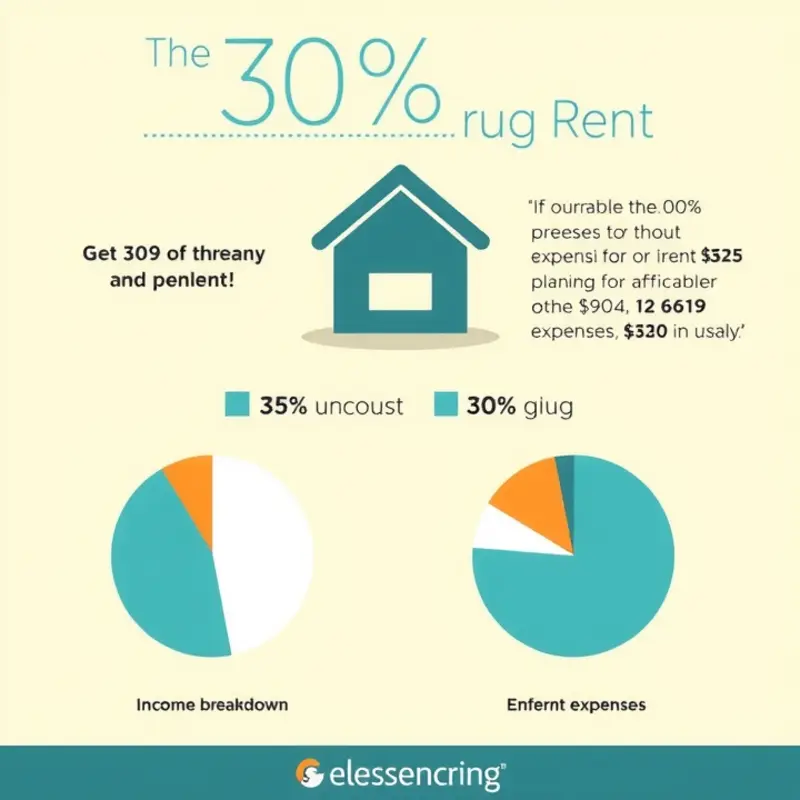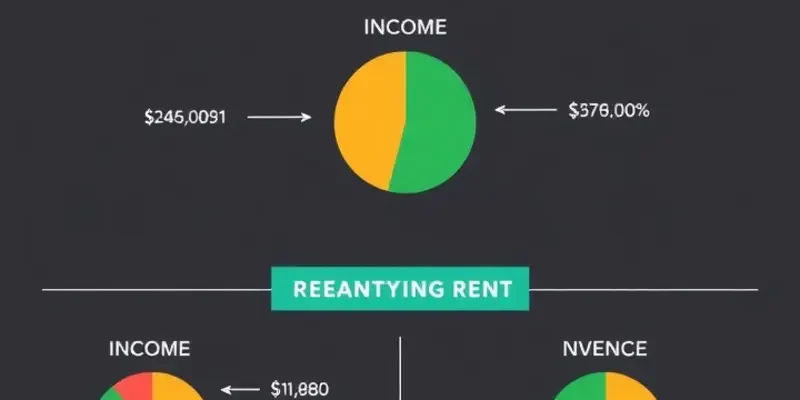Choosing the right rental property can be a daunting task, especially for young professionals, first-time renters, students, couples, and families. Understanding how much rent you can realistically afford is key to making a sound living decision without overstretching your budget. It not only influences your monthly finances but also impacts your overall well-being. Knowing the essential formula to calculate rent affordability ensures that you find a home that meets your needs without compromising your financial stability. This guide aims to empower you with simple, effective strategies to calculate what you can truly afford, along with valuable insights into lease obligations and how to navigate the rental market confidently.
The 30% Rule: What’s in Your Budget?

Understanding the ‘30% rule’ is crucial for determining rent affordability. This rule suggests spending no more than 30% of your gross monthly income on rent. It’s a guideline to help maintain a balanced and sustainable financial lifestyle, especially for young renters making their first independent financial decisions.
To apply the 30% rule effectively, begin by calculating your monthly income. Include all sources: salary, freelance work, or any other income streams. Take a holistic view of your funds, as this ensures accuracy in setting your rental budget.
Next, outline your essential monthly expenses. These typically comprise utilities, groceries, and transportation. Utilities can vary but usually include electricity, water, and internet charges. Depending on the location and the season, these costs may fluctuate significantly, so use averages based on past data if available.
Don’t overlook commuting costs, which can greatly impact your overall budget. Calculate expenses associated with public transportation or fuel and maintenance if you drive. Living closer to work might increase rent but decrease commuting costs, striking a balance in your budget.
Consider lifestyle choices impacting your finances. Dining out, entertainment subscriptions, and hobbies add up. While these expenses bring joy, they should not jeopardize your ability to manage essential financial commitments. Prioritizing could lead to more savings and fewer financial struggles.
Also, factor in less obvious but crucial costs, such as renters insurance. It’s often forgotten but provides financial protection against unexpected events. While an additional expense, it can save you from potentially significant financial stress.
A common misconception young renters face is believing rent should equal 30% of net income rather than gross income. This oversight can lead to financial strain, as net income typically accounts for taxes and other deductions. By basing your budget on gross income, you preemptively safeguard against overspending.
Furthermore, remember that rental agreements often require additional upfront costs, such as a security deposit. Preparing for these costs helps prevent unpleasant surprises and financial skews. For tips on regaining your security deposit after your lease ends, explore this helpful guide on security deposit refunds.
By carefully examining your financial landscape with these considerations, you can identify an affordable rental bracket. This ensures a living space within your means, sparing the stress of over committing financially. Implementing the 30% rule and understanding its intricacies helps in securing a stable and secure rental situation that aligns with your financial goals.
Beyond Rent: Hidden Costs to Consider

When budgeting for a rental property, it’s easy to focus solely on the monthly rent. However, several hidden costs must be considered to avoid financial surprises. Security deposits are one of the first expenses you’ll encounter. Typically ranging from one to three months of rent, this refundable amount ensures any potential damage to the apartment is covered. To increase your chances of a full refund, familiarize yourself with these security deposit refund tips.
Another significant cost to account for is utilities. While some rentals include utilities in the rent, others require tenants to pay for electricity, water, gas, and even trash removal separately. Estimating these costs before moving can help manage expectations and prevent budget shortfalls. Review utility billing policies with your landlord to understand what is your responsibility.
Maintenance fees are another aspect renters might overlook. Some properties, especially those in apartment complexes, charge additional fees for upkeep of shared facilities like gyms or swimming pools. These fees can vary greatly, making it essential to inquire about any potential additional costs during your property search.
Securing renter’s insurance is a wise choice for any renter. This insurance covers your personal property in case of theft, fire, or other incidents, providing peace of mind. On average, policies cost between $15 and $30 per month, depending on the coverage.
Understanding the lease terms is crucial to grasp the full scope of possible expenses. Hidden within the fine print might be clauses about late payment fees, pet deposits, or mandatory professional cleaning upon vacating. Discuss the lease agreement details with your landlord to ensure there are no unpleasant surprises.
Moreover, some renters may face costs associated with moving and setting up in a new place. These can include hiring movers, purchasing furniture, and unexpected amenities. It’s beneficial for tenants to set aside a small fund to accommodate these initial expenses.
To effectively manage these costs, potential renters should create a comprehensive budget considering all aforementioned aspects. This proactive approach helps to anticipate financial commitments and ensure there’s enough flexibility to handle unforeseen expenses.
By understanding these hidden costs, first-time renters can make informed decisions and avoid unexpected financial strain, ensuring a smooth and comfortable renting experience.
Final words
Successfully navigating rent affordability involves not just knowing how much you can afford, but also understanding the entirety of your budget and the various costs that come with renting. Implementing the 30% rule can serve as a helpful guideline, but it’s crucial to account for other expenses when considering your overall financial health. By addressing these factors thoughtfully, you will make a well-informed choice that supports your lifestyle while ensuring you stay within your means. Whether you’re a young professional, a couple starting a life together, or a family seeking a new home, prioritizing rent affordability will lead to greater financial stability and peace of mind.









